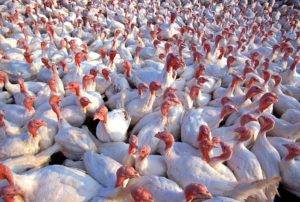There’s been abundant research on how lighting effects chicken reproductivity and behavior, but not much is known about how lighting effects turkey hen reproduction.
 A research project at Pennsylvania State University will use advanced imaging technology to pinpoint the brain areas responsible for regulating the seasonal cycle in turkey hen reproduction.
A research project at Pennsylvania State University will use advanced imaging technology to pinpoint the brain areas responsible for regulating the seasonal cycle in turkey hen reproduction.
“What we’re trying to do is essentially break that aspect of the seasonal cycle where they go broody after a while,” explained Dr. Paul A. Bartell, Associate Professor of Avian Biology at Pennsylvania State University.
“Once we can identify where it’s shutting down, we can start to manipulate it so we can extend that period” through specific lighting plans or targeted breeding, he added.
Where in the brain is reproduction initiated?
Reproduction in the turkey hen is initiated when specialized receptors in their brain sense a longer photoperiod, or increased daylight.
“We know that reproduction is initiated within the brain, that there are signals within the brain that then get disseminated throughout the body via changes in hormones to affect the ovaries,” he said.
“But if we can lengthen that process and also prevent the process from the natural shutdown that occurs, then we can either increase egg production or maybe make it more efficient, so you don’t have to have as many hens.”
Light-sensing proteins
The project also hopes to identify some of the key proteins in the eye turkey hens use to sense light.
“One of the things we want to do is characterize which areas have which chemical. That way, we’ll know which areas are responsive to which wavelength of light. This will allow us to get a better handle on potential approaches to manipulation,” Bartell said.
For example, a combination of red and blue light might affect turkey reproduction very differently than red and yellow or red and green. The timing or intensity of lighting may also play a role.
The research project is funded by a five-year grant from the National Institute of Food and Agriculture.
Original article by ELIZABETH DOUGHMAN, Learn more at WATT Poultry.
Subscribe to our blog!
